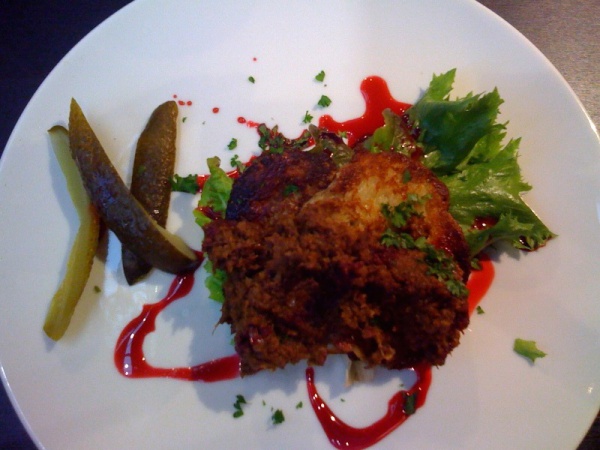Facts About Vorschmack
Vorschmack, also known as forshmak, is a cherished traditional dish rooted in Eastern Europe, appearing in Ashkenazi Jewish, Finnish, Russian, and Polish cuisines.
In Ashkenazi Jewish cuisine, vorschmack evolved from its origins as a hot appetizer made with fried herring in East Prussia. Today, it is more commonly enjoyed as a cold pâté made with brined herring. This modern rendition often includes chopped hard-boiled eggs, onions, and apples, served either as a spread or a salad.
In Russian cuisine, vorschmack was historically served as a hot dish, often enjoyed as a zakuska (appetizer) or for breakfast. Traditional Russian recipes might include a combination of meat, herring, bread, onions, and smetana (a type of sour cream).
Polish cuisine features both cold pâtés and hot baked versions of forshmak. One notable variant is forszmak lubelski, a meat stew originating from the Lublin region.
Finnish vorschmack typically comprises ground meat, anchovies or herring, and onions. It’s usually garnished with potatoes, pickles, and smetana, and often complemented with snaps (a type of alcoholic beverage). This dish holds a special connection to Marshal Gustaf Mannerheim, a Finnish military leader. Tradition suggests that vorschmack might have traveled to Finland from Poland or Russia. The Savoy restaurant in Helsinki, a favorite of Mannerheim, is renowned for its vorschmack, maintaining a similar style and menu from his era.
Whether served hot or cold, as a spread or a stew, vorschmack boasts a rich history and a variety of regional adaptations that continue to delight palates across Eastern Europe.

 Syria
Syria